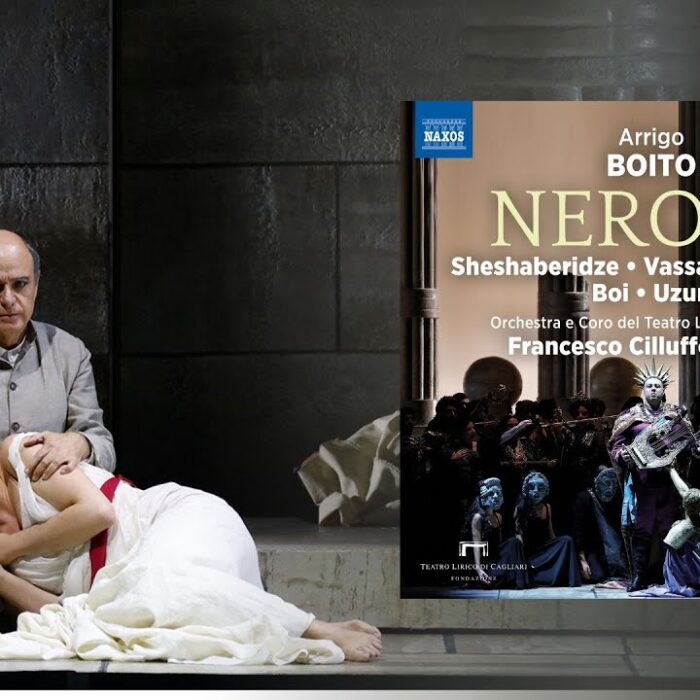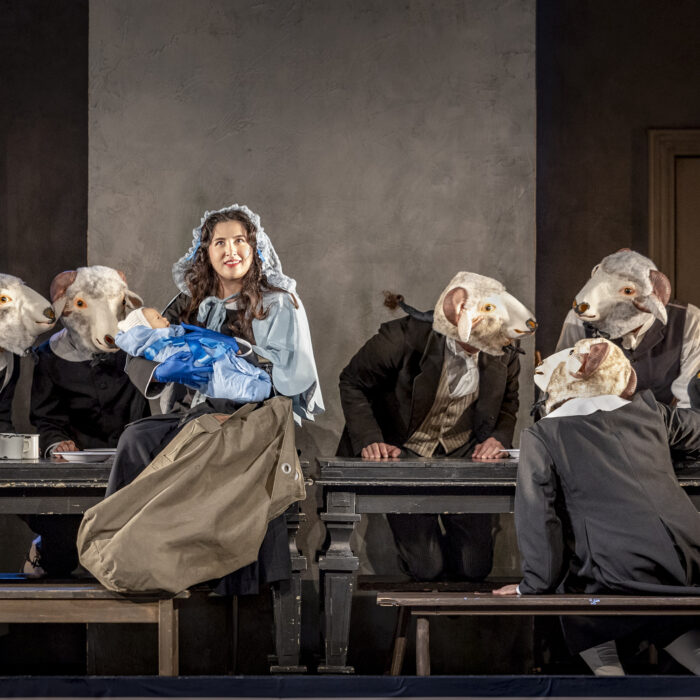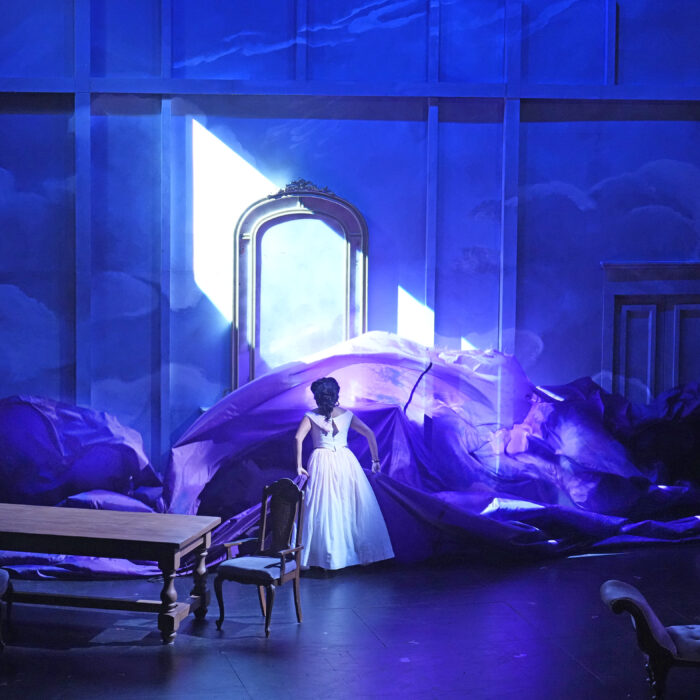
Opera Australia 2025 Review: La Bohème
By Gordon Williams(Photo credit: Keith Saunders)
Gale Edwards’ 2011 production of “La Bohème,” part of this year’s Opera Australia winter season at the Sydney Opera House, was last seen here in summer 2023. The production’s dominant ideas are that of a spiegeltent and cabaret in Weimar-era Berlin – “the dazzling fishnets and fairy lights world of 1930s Berlin,” according to the company’s press release. The painter Marcello (played here by baritone Luke Gabbedy) is painting his “Parting of the Red Sea” as a diorama inside the tent’s convex walls (Rodolfo, Marcello, Schaunard and Colline’s shared attic) as the show begins. Carnival overtones set up great opportunity for irony. The question may be whether much irony is needed for the telling of such a simple love story. For what is Puccini’s opera about? The all-too-soon decline and end-of-winter death (no spring renewal) of Rodolfo’s newfound love-interest, Mimì (sung beautifully here by soprano Olivia Cranwell) and, less so, the palling of the main characters’ youths? Might an idea that is very smart work against the simple poignancy of the plot?
Musically, there was much to commend this production, restaged by Danielle Maas in her first revival for Opera Australia. Conductor Erina Yashima, also making her Opera Australia debut, conjured beautiful and informative playing from the Opera Australia Orchestra. Stand-out moments included the tone poem that depicts the newly snow-laden precincts of a tollgate at the beginning of Act three, and the swelling build-up behind Mimì in her number “Mi chiamano Mimì,” her introduction to Rodolfo (tenor, Kang Wang) in Act one as their love is kindled. Vocal highlights, acclaimed by the audience, included the sobering sacrifice in bass David Parkin’s delivery of Colline’s Act four “Overcoat Aria” and of course, those much-loved Act one solos (‘Che gelida manina’ and ‘Sì, mi chiamano Mimì’) and the soaring duet, ‘O soave fanciulla.’
Kang and Cranwell’s ‘self-introductions’ mentioned above garnered deserved applause, while soprano Rachelle Durkin as Musetta almost provided the keynote of the production. Durkin successfully portrayed Musetta’s initial shallowness. Musetta and Marcello’s love stands in dramatic contrast to that of Rodolfo and Mimì. But I couldn’t help feeling that that soaring delivery of the second part of Musetta’s Act two Waltz Song (‘Quando m’en vo’) was emblematic of the growth Durkin would later show peaking in Act four when Musetta comprehends the gravity of Mimì’s situation. This production seemed to focus one’s understanding of Mimì’s plight very deliberately through the reactions registered by Musetta and, interestingly, Schaunard (bass-baritone Shane Lowrencev) whose antics seemed exaggerated, to me, at first, but whose “Marcello, è spirata” (Marcello, she’s gone) was one of the most moving moments of the opera. Visually, this production was so impressive, for example, the use of a revolving stage (a carousel) at a couple of key musical and dramatic moments in Acts two and three.
Sets were by Brian Thomson, lighting by John Rayment and costumes by Julie Lynch. The figure of Schaunard in the upstage doorway of the boys’ lodgings silhouetted by John Rayment’s off-to-the-left lighting as Rodolfo and Mimì sang their Act four leave-taking, was such a powerful image of forlorn despair. The gravity of Luke Gabbedy as Marcello was also moving – one felt for him in Act two when Musetta was trying to re-ignite his ardor by fanning his jealousy.
Act two was arguably the center of focus of the production. The stage picture of the crowds around and in the Café Momus (after a spectacular change of scene) where the friends meet up just after Mimì and Rodolfo have commenced their love affair and where Musetta and Marcello resume theirs, was particularly impressive. So much is going on in this Act that the surtitles had to do their work to keep us focused on the love affairs, and principally Rodolfo and Mimì’s, rather than the enveloping swirl of activity, but this Act saw the opportunity for justified comedy. When the friends finally make off, leaving Musetta’s now-dumped ‘older man’ Alcindoro with the bill, the tightly-focused spot on bass Andrew Moran’s sudden look-up of consternation followed by a snap blackout was genuinely funny. But the production might not have always been so guarded against unwanted laughs. The Act one fooling-around of the four boys whose fraternity is the background to this love-story must be a challenge to a director. Perhaps it’s okay to get a laugh out of Rodolfo kicking their ineffective stove-oven in the freezing attic in Act one, but there might have been a miscalculation in Act three where Rodolfo and Mimì decide to give their love another shot though Rodolfo has tried to leave to spare himself the pain of being bereaved by Mimì’s inevitable death. The work itself cleverly juxtaposes their doomed romance with the lighter-hearted affair of Marcello and Musetta, and the much-publicized stage image of this production is actually that of Musetta and Marcello upstage in the snow. But Marcello and Musetta beginning to passionately peel off their clothes (in that snow) elicited some giggles from where I was sitting. Might that have been a midjudgement? Fortunately Act four and the music restored a sense of the final tragedy.



